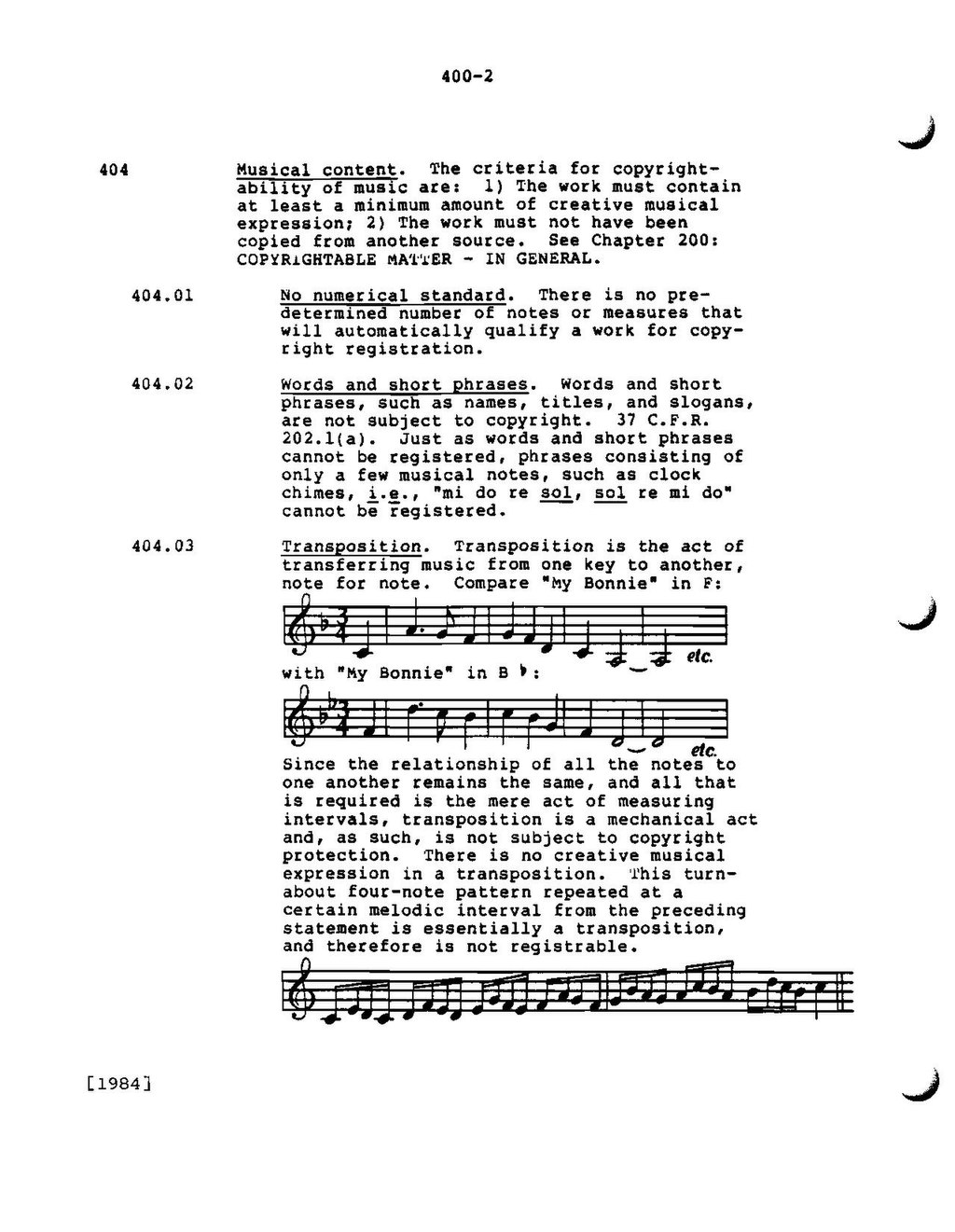400-2
404
Musical content. The criteria for copyrightability of music are: 1) The work must contain at least a minimum amount of creative musical expression, 2) The work must not have been copied from another source. See Chapter 200: COPYRIGHTABLE MATTER -IN GENERAL.
404.01
No numerical standard. There is no predetermined number of notes or measures that will automatically qualify a work for copyright registration.
404.02
Words and short phrases. Words and short phrases, such as names, titles, and slogans, are not subject to copyright. 37 C.F.R. 202.1(a). Just as words and short phrases cannot be registered, phrases consisting of only a few musical notes, such as clock chimes, i.e., "mi do re sol, sol re mi do" cannot be registered.
404.03
Transposition. Transposition is the act of transferring music from one key to another, note for note. Compare "My Bonnie in F:

with my Bonnle in B♭:

Since the relationship of all the notes to one another remains the same, and all that is required is the mere act of measuring intervals, transposition is a mechanical act and, as such, is not subject to copyright protection. There is no creative musical expression in a transposition. This turn about four-note pattern repeated at a certain melodic interval from the preceding statement is essentially a transposition, and therefore is not registrable.

[1984]
